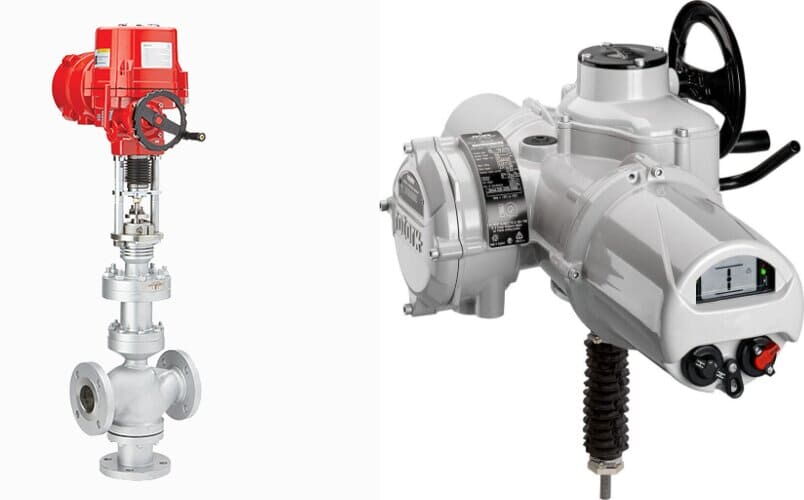Electric valve actuators are commonly employed with various types of valves, including ball, gate, butterfly, and globe valves, each suited to specific flow control requirements. By automating valve control, electric actuators reduce the need for manual intervention, enabling safer, faster, and more reliable operations.

This entire process allows for precise control over the valve's position, which can be critical in applications where flow rates must be carefully regulated. Electric actuators are especially valued in situations where remote control, safety, and automation are necessary. Selecting the right electric actuator is vital for ensuring optimal performance and reliability in any automated system. Here are five essential considerations to keep in mind: Electric actuators must be compatible with the specific type of valve. There are three main types to consider:
Different applications require different levels of control:
In this type, the actuator simply opens or closes the valve. This is typical in applications where the valve either needs to be fully open or fully closed.
For applications requiring varying flow rates, modulating actuators allow partial opening or closing to achieve the desired flow rate.
When precise adjustments are needed, actuators with control functionality provide more accurate and responsive movement to manage flow with high precision.
In certain applications, it’s essential for the actuator to revert to a predetermined position in the event of a power failure or system fault. Fail-safe actuators can return the valve to a safe position—open or closed—depending on system requirements. This feature is especially important in industries where fluid containment is critical for safety.
Knowing the required torque (rotational force) or thrust (linear force) is essential for choosing an actuator with adequate power to control the valve. Different valve types and sizes have varying torque and thrust demands, and undersized actuators may struggle to perform reliably. Selecting an actuator with the appropriate power range ensures smooth operation and prevents mechanical strain.
Electric actuators come in two main styles:
These actuators feature advanced control systems that can be set and adjusted without opening the actuator housing. Non-intrusive designs are beneficial for hazardous environments, as they allow for adjustments without exposing internal components to external conditions.
Conventional actuators require manual access to adjust settings, which is suitable for applications where the environment is stable and safe.
Electric valve actuators offer several advantages, making them a popular choice for automated valve control in various industries:
Electric actuators enable precise control over valve positioning, which is crucial in applications requiring regulated flow rates, such as in water treatment or chemical processing.
These actuators support remote control and monitoring, allowing operators to adjust and track valve positions from a central control room. This feature not only enhances safety but also improves overall system efficiency.
With fewer moving parts and no need for pneumatic or hydraulic power sources, electric actuators are typically easier to maintain and operate, resulting in reduced maintenance costs over time.
Unlike pneumatic or hydraulic actuators, which rely on air compressors or hydraulic fluid, electric actuators are cleaner, making them an eco-friendly choice for industries aiming to reduce their carbon footprint.
Electric actuators provide safe and reliable operation in applications involving hazardous or corrosive fluids. The fail-safe feature in some models ensures that valves revert to a safe position in case of power loss, enhancing system safety.
Electric valve actuators are used across a wide range of industries, including:
For controlling the flow of oil, gas, and other fluids in pipelines and processing facilities.
Used in municipal and industrial water treatment plants for flow control and distribution.
Managing steam, water, and gas flow in power plants to ensure efficient energy production.
Precise control of fluids and gases for safety and efficiency in chemical manufacturing processes.
Electric valve actuators are indispensable in modern automated systems, offering efficient, reliable, and precise control over valve functions. By understanding their operation, key selection criteria, and application benefits, industries can make informed decisions that improve operational safety, reduce costs, and enhance overall productivity. With the right electric valve actuator, companies can optimize their processes while ensuring a safer and more sustainable future in automated valve control.
